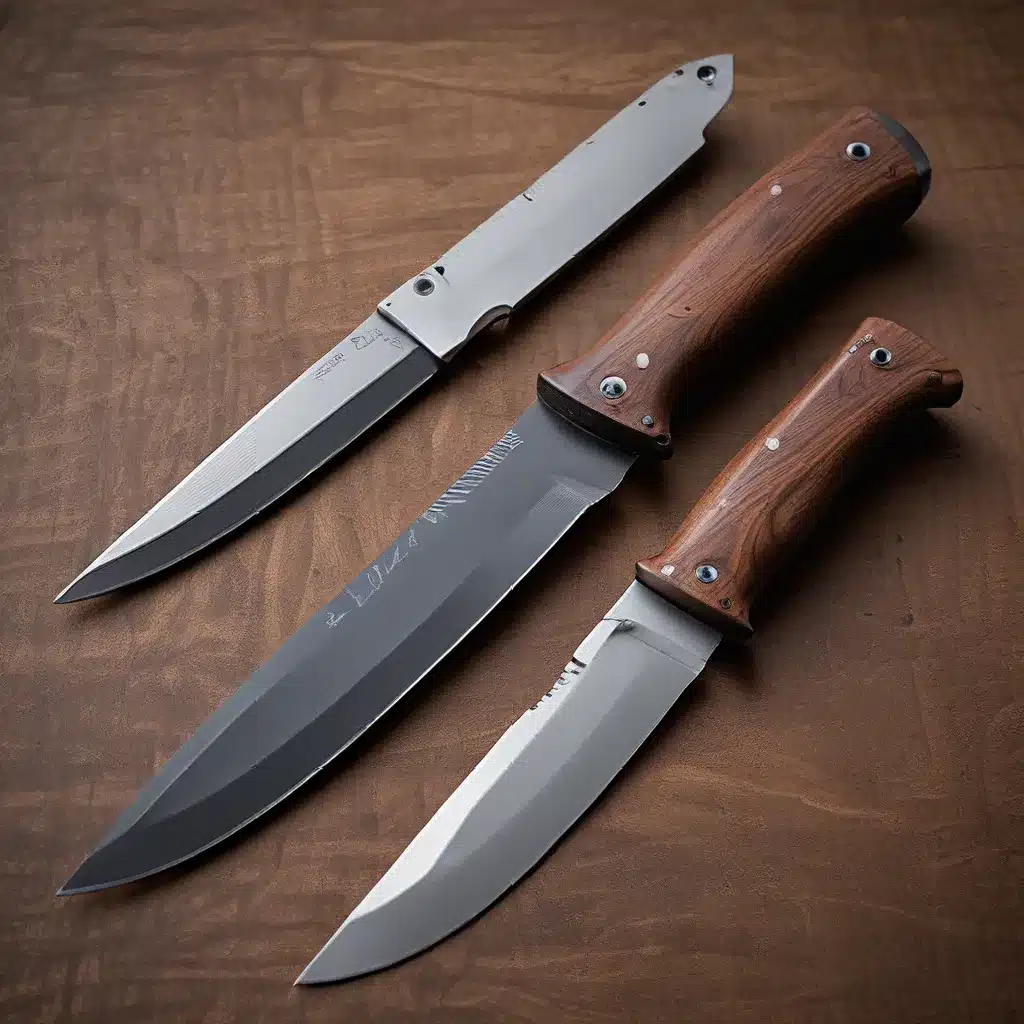
The Humble Blade: From Primitive to Precision
I still remember the first time I held a knife in my hands. It was a simple affair, a blade fashioned from flint that had been carefully chipped and sharpened by the skilled hands of my ancestors. Even then, I could sense the power and potential within that unassuming tool – a power that has evolved and transformed over the millennia, shaping the very way we interact with the world around us.
The history of the knife is a fascinating one, a tale of ingenuity, adaptation, and the relentless pursuit of improving upon the tools we use to shape our environment. From those early flint blades to the precision-engineered marvels of today, the knife has been a constant companion, an extension of our hands and minds, constantly evolving to meet the changing needs of the human experience.
Forging a Legacy: The Evolution of Knife Design
As our ancestors transitioned from nomadic hunter-gatherers to settled agrarian societies, the demands on their tools shifted. The need for specialized knives became increasingly apparent, as tasks like hunting, food preparation, woodworking, and construction required different blade shapes, sizes, and materials.
Historical records reveal that early knife designs were often inspired by the natural world, mimicking the sharp edges and curved profiles of animal teeth and claws. These primitive tools were forged from materials like stone, bone, and antler, with each innovation pushing the boundaries of what was possible.
As the ages passed, the discovery of metals like bronze and iron revolutionized the way knives were crafted. Smiths could now temper and harden their blades, creating tools that were stronger, sharper, and more durable than ever before. The introduction of specialized steels in the Middle Ages further refined the art of knife-making, allowing for the creation of precise and intricate designs that could tackle an ever-expanding array of tasks.
The Scalpel’s Saga: A Tale of Surgical Precision
One of the most remarkable evolutions in knife design can be seen in the development of the scalpel, a tool that has played a crucial role in the advancement of modern medicine. Tracing the history of the scalpel reveals a fascinating journey, one that parallels the broader story of knife evolution.
In the earliest days of surgery, practitioners relied on crude instruments fashioned from bone, ivory, and primitive metal alloys. These tools were often imprecise and difficult to sterilize, posing significant risks to both the patient and the practitioner. However, as our understanding of anatomy and infection grew, so too did the demand for more precise and hygienic surgical instruments.
The introduction of stainless steel in the late 19th century was a game-changer, allowing for the creation of scalpels that were sharper, more durable, and easier to clean. Advancements in metallurgy and coating technologies have since refined the scalpel even further, with modern blades coated in materials like zirconium to enhance their performance and longevity.
The Evolving Toolbox: Knives in the Modern Age
As our society has progressed, the role of the knife has diversified and expanded in ways that our ancestors could scarcely have imagined. Today, knives are used for a wide range of tasks, from food preparation and outdoor recreation to industrial and medical applications.
In the culinary world, chefs and home cooks alike have embraced the versatility of specialized knives, each designed to excel at a particular task, whether it’s slicing, dicing, or filleting. The evolution of knife materials and construction has enabled the creation of blades that are sharper, more durable, and easier to maintain than ever before.
In the great outdoors, hikers, campers, and survivalists have come to rely on sturdy, multi-purpose knives to tackle a variety of tasks, from cutting rope and kindling to gutting fish and building shelters. These rugged tools have evolved to meet the demands of the wilderness, with innovative features like serrated edges, partial tangs, and non-slip handles.
And in the realms of industry and medicine, the knife has become an indispensable tool, enabling precision work in fields as diverse as manufacturing, construction, and surgery. Advancements in metallurgy and engineering have produced blades that are stronger, sharper, and more specialized than ever before, revolutionizing the way we approach these critical tasks**.
Embracing the Future: The Knife’s Endless Potential
As I reflect on the remarkable journey of the knife, I am struck by the endless potential that lies before us. Ongoing research and innovation are sure to bring even more remarkable advancements, pushing the boundaries of what we thought was possible.
Perhaps we will see the development of self-sharpening blades, or knives with built-in sensors that can detect and avoid harmful materials. Imagine a world where our tools can adapt to our needs in real-time, anticipating our desires and enhancing our capabilities in ways we can scarcely envision today.
The future of the knife is likely to be one of increased specialization, personalization, and integration with our digital lives. Knives may become “smart” devices, communicating with our smartphones and homes to provide customized assistance and optimize our workflows.
Of course, these are just speculations – the true path of the knife’s evolution is yet to be written. But one thing is certain: the humble blade will continue to shape our world, adapting and transforming to meet the ever-changing needs of humanity.
And as I hold this modern knife in my hands, I can’t help but feel a sense of wonder and reverence for the incredible journey it has taken to arrive at this moment. The knife’s tale is one of resilience, innovation, and the indomitable human spirit – a story that I suspect will continue to unfold for generations to come.
So, let us embrace the future of the knife, exploring its endless potential and marveling at the masterful evolution of this indispensable tool. Who knows what wonders await, as we continue to push the boundaries of what is possible?


